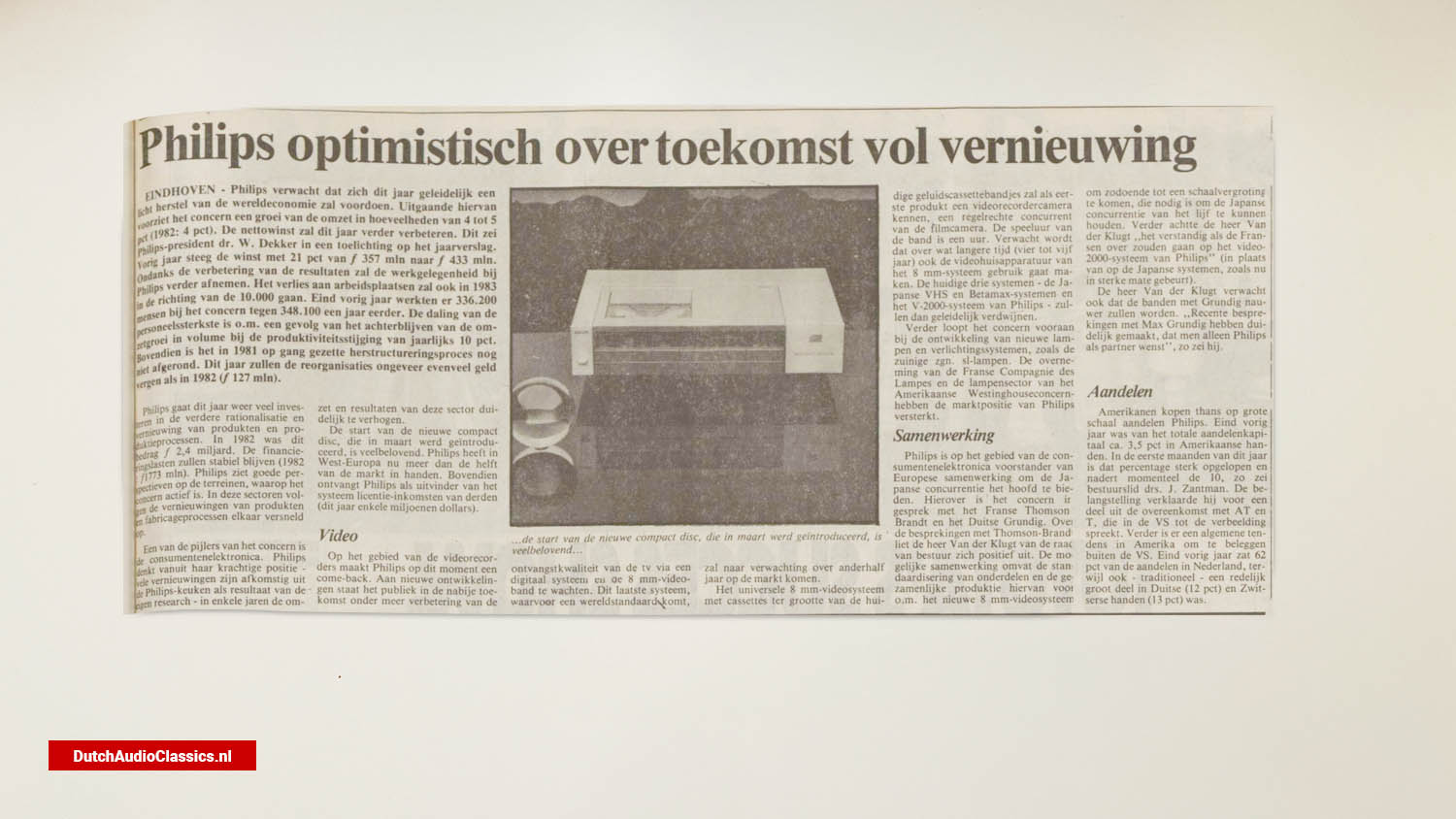EINDHOVEN - Philips expects a gradual slight recovery of the wereideconomy this Year. Assuming this, the company anticipates sales growth in volumes of 4 to 5 percent (1982: 4 percent). Net income will continue to improve this year. Philips President Dr. W. Dekker said this in a comment on the annual report.
Last year profits rose by 21 perocemt from 357 million guilders to 433 million guilders, Despite the improvement in results, employment at philips will continue to decline. Job losses in 1983 will also head toward the 10,000 mark. At the end of last year, the group employed 336,200 people compared to 348,100 a year earlier. Part of the reason for the decline in the workforce is that sales growth in volume has lagged behind the 10 percent annual increase in productivity. In addition, the restructuring process initiated in 1981 has not yet been completed. This year the reorganizations will require about the same amount of money as in 1982 (127 million guilders).
Philips will again invest heavily this year in the further rationalization and renewal of products and production processes. In 1982 this amount was 2.4 billion guilders. Financing costs will remain stable (1982 NLG 1,773 million). Philips sees good prospects in the areas in which it operates. Product and manufacturing process innovation is accelerating in these areas.
One of the Company's pillars is consumer electronics. From its strong position -all the innovations come from the Philips kitchen as a result of its own research- Philips has in a few years significantly increased the sales and results of this sector.The start of the new compact disc, introduced in March, is promising. Philips now has more than half of the market in Western Europe. Moreover, as the inventor of the system, Philips receives licensing income from third parties (several million dollars this year).
Video
In the field of video recorders, Philips is currently making a come-back. New developments awaiting the public in the near future include improvements in TV reception quality via a digital system and the 8 mm video tape. The latter system, for which a world standard is coming, is expected to hit the market in a year and a half.
The universal 8 mm video system with cassettes the size of today's audio cassette tape jes will have as its first product a video recorder camera, a direct competitor to the film camera. The playing time of the tape is one hour.
It is expected that in a somewhat longer time (four to five years) video home equipment will also use the 8 mm system. The current three systems-the Japanese VHS and Betamax systems and Philips' V-2000 system-will then gradually disappear.
Furthermore, the group is at the forefront of developing new lamps and lighting systems, such as the economical so-called sl-lamps. The acquisition of the French Compagnie des Lampes and the lamp business of the American Westinghouse concern-have strengthened Philips' market position.
Cooperation
In the field of consumer electronics, Philips favors European cooperation to face Ja-pan competition. To this end, the group is in talks with France's Thomson Brandt and Germany's Grundig. About the discussions with Thomson-Brand, Mr. Van der Klugt of the Board of Management expressed a positive opinion. The possible cooperation includes the standardization of components and their joint production for, among other things, the new 8 mm video system in order to achieve the economy of scale necessary to keep the Japanese competition at bay. Furthermore, Mr. Van der Klugt considered "it wise for the French to switch to Philips' video-2000 system" (rather than to the Japanese systems, as is now being done to a large extent).
Mr. Van der Klugt also expects closer ties with Grundig. "Recent discussions with Max Grundig have made it clear, that they only want Philips as a partner," he said.
Shares
Americans are now buying Philips shares on a large scale. At the end of last year, of the total share capital, about 3.5 percent was in American hands. In the first few months of this year, that percentage rose sharply and is currently approaching 10, said board member Drs. J. Zantman. He explained the interest in part white the deal with AT&T, which has caught the imagination in the U.S. Furthermore, there is a general trend in America to invest outside the U.S. At the end of last year, 62 percent of the shares were in the Netherlands, while also -traditionally- a fair amount was in German (12 percent) and Swiss hands (13 percent).
